Welcome to Bicol’s Flavor Fiesta! – Best Food Delicacies in Bicol
Prepare your taste buds for an extraordinary culinary journey through Bicol, a region in the Philippines renowned for its unique and delectable food delicacies. Famous for its use of coconut milk and chili peppers, Bicol offers an array of dishes that are both rich in flavor and tradition. Signature dishes such as Bicol Express, a spicy pork stew simmered in coconut milk, and Laing, a savory concoction of taro leaves cooked in coconut milk and chili, showcase the region’s love for bold and creamy flavors. In this article, we’ll take you on a flavorful journey through some of the best food delicacies in Bicol that you absolutely must try.
Bicol Express – The Origin
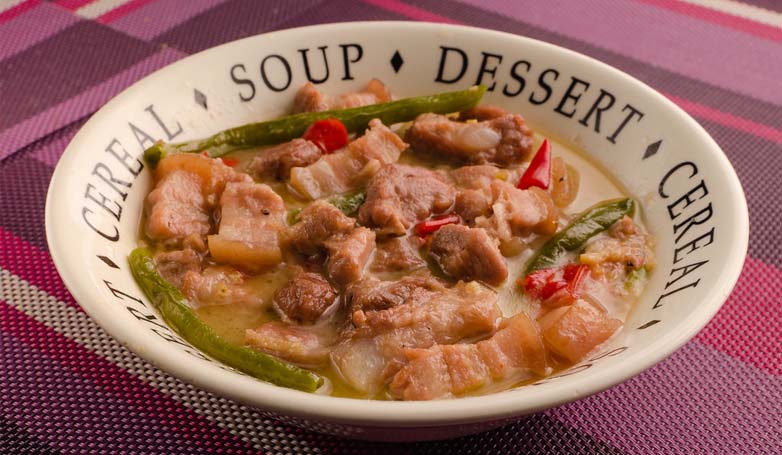
Bicol Express, a dish synonymous with the Bicol region of the Philippines, has an origin story as rich and flavorful as the dish itself. Named after the train service that runs from Manila to the Bicol region, Bicol Express is believed to have been created by a native Bicolana who wanted to craft a dish that encapsulated the fiery and creamy essence of Bicolano cuisine. The dish, which features pork cooked in coconut milk and generously spiced with chili peppers, perfectly embodies the region’s love for spicy and hearty flavors.
Its creation is often attributed to the late restaurateur Cely Kalaw, who introduced it in her Manila restaurant in the 1970s, aiming to bring the taste of Bicol to the capital. Over the years, Bicol Express has become a staple in Filipino households, celebrated for its comforting heat and creamy texture, and remains a beloved symbol of Bicol’s vibrant culinary heritage.
Ingredients and Preparation
- Ingredients:
- Pork belly
- Coconut milk
- Shrimp paste (bagoong)
- Bird’s eye chili (siling labuyo)
- Onion, garlic, and ginger
- Preparation:
- Sauté the garlic, onion, and ginger.
- Add the pork belly and cook until browned.
- Stir in the shrimp paste and chili peppers.
- Pour in the coconut milk and simmer until the pork is tender and the sauce is thick.
Laing – The Quintessential Bicolano Dish
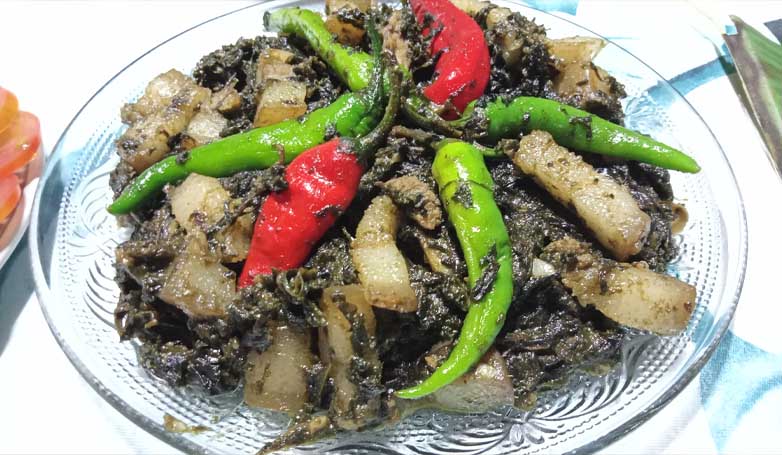
Laing is a quintessential Bicolano dish that showcases the region’s love for coconut milk and chili peppers. This savory dish is made from dried taro leaves, slowly simmered in a rich mixture of coconut milk, garlic, onions, and a generous amount of chili peppers, giving it a distinct spicy kick. Originating from the Bicol region in the Philippines, Laing is a testament to the resourcefulness and creativity of the Bicolanos, who utilize the abundant taro plants and coconuts in their area.
The leaves are meticulously prepared, often dried under the sun to enhance their flavor before being cooked. The result is a flavorful and creamy dish that perfectly balances the heat of the chili with the richness of the coconut milk. Laing is typically served with steamed rice and is a beloved part of Bicolano’s culinary tradition, representing the region’s bold flavors and culinary ingenuity.
Ingredients and Preparation
- Ingredients:
- Dried taro leaves
- Coconut milk
- Shrimp paste (bagoong)
- Bird’s eye chili
- Pork or dried fish (optional)
- Preparation:
- Wash and dry the taro leaves thoroughly.
- Sauté the garlic, onion, and ginger.
- Add the shrimp paste and chili peppers.
- Stir in the coconut milk and bring to a boil.
- Add the taro leaves and simmer until tender.
Pinangat – The Heart of Bicolano Cuisine
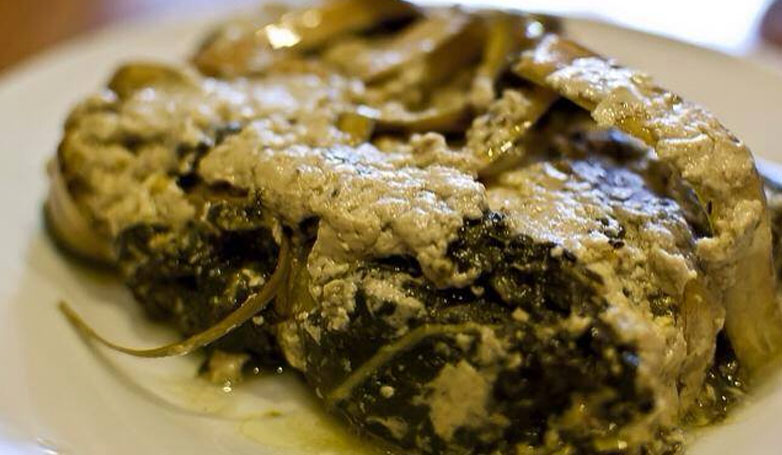
Pinangat is another beloved dish from the Bicol region, celebrated for its unique blend of flavors and traditional preparation methods. This delicacy is made by combining shredded taro leaves with ground meat or fish, coconut milk, and a variety of spices, including chili peppers for that characteristic Bicolano heat. The mixture is then wrapped in whole taro leaves and tied securely before being simmered in more coconut milk until tender and flavorful. The slow-cooking process allows the ingredients to meld together, resulting in a rich, creamy, and slightly spicy dish that is both comforting and satisfying.
Pinangat showcases the ingenuity and resourcefulness of Bicolano cuisine, using local ingredients to create a dish that is both complex in flavor and simple in its natural goodness. Typically served with steamed rice, Pinangat remains a staple in Bicolano households and a must-try for anyone looking to experience the authentic tastes of the Philippines.
Recipe for Pinangat
- Ingredients:
- Taro leaves
- Ground shrimp or fish
- Coconut milk
- Bird’s eye chili
- Onion, garlic, and ginger
- Preparation:
- Mix the ground shrimp or fish with garlic, onion, and ginger.
- Wrap small portions of the mixture in taro leaves.
- Place the bundles in a pot and pour coconut milk over them.
- Add chili peppers and simmer until the taro leaves are tender.
Kandingga – Discovering Kandingga

Kandingga, often referred to as “Bicolano Bopis,” is a traditional dish from the Bicol region that exemplifies the area’s inventive use of local ingredients and bold flavors. This flavorful and hearty dish is made from finely chopped pork lungs, heart, and other offal, which are sautéed with garlic, onions, tomatoes, and a medley of spices, including the indispensable chili peppers that give it a distinctive spicy kick.
The offal is simmered until tender and infused with the rich, spicy, and slightly tangy flavors of the seasoning. Often garnished with bell peppers and served with a splash of vinegar, Kandingga offers a delightful contrast of textures and tastes. This dish not only highlights the Bicolanos’ penchant for robust, spicy cuisine but also their skill in transforming humble ingredients into a delicious and satisfying meal. Traditionally served with steamed rice, Kandingga is a testament to the vibrant and resourceful culinary traditions of the Bicol region.
Making Kandingga
- Ingredients:
- Pork liver and lungs
- Vinegar
- Bird’s eye chili
- Onion, garlic, and ginger
- Preparation:
- Sauté the garlic, onion, and ginger.
- Add the minced pork liver and lungs and cook until browned.
- Pour in the vinegar and add chili peppers.
- Simmer until the meat is fully cooked and the flavors are well combined.
Kinunot – What Makes Kinunot Unique?
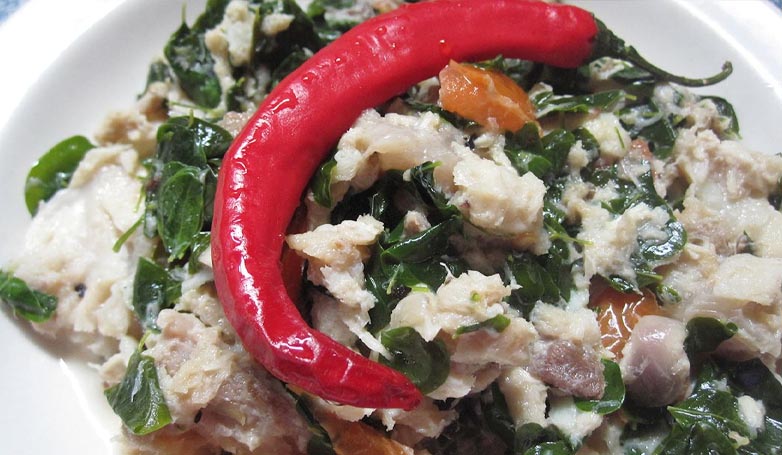
Kinunot is a distinct and delectable dish from the Bicol region that highlights the area’s love for seafood and coconut milk. This traditional delicacy is typically made with either flaked stingray or shark meat, which is cooked in a rich, creamy coconut milk sauce infused with garlic, onions, ginger, and, of course, chili peppers for that signature Bicolano heat. Malunggay leaves (moringa) are often added towards the end of the cooking process, contributing both flavor and nutritional value to the dish. The name “Kinunot” translates to “shredded” or “flaked,” referring to the preparation of the main ingredient.
The resulting dish is a harmonious blend of creamy, spicy, and slightly sweet flavors, with the tender fish absorbing the aromatic sauce beautifully. Served with steamed rice, Kinunot is a favorite among locals and visitors alike, offering a true taste of Bicol’s culinary heritage. It not only reflects the region’s abundant marine resources but also its skillful use of ingredients to create dishes that are both comforting and full of character.
Cooking Kinunot
- Ingredients:
- Stingray or shark meat
- Coconut milk
- Malunggay leaves
- Bird’s eye chili
- Onion, garlic, and ginger
- Preparation:
- Boil the stingray or shark meat until tender, then flake it.
- Sauté the garlic, onion, and ginger.
- Add the flaked meat and coconut milk.
- Stir in the malunggay leaves and chili peppers.
- Simmer until the sauce thickens.
Dessert
Bicolano desserts are a vibrant highlight of any Bicolano meal, offering a delightful fusion of flavors. These desserts are known for their unique combination of sweetness, savoriness, and occasional spiciness, creating a rich and memorable taste experience. They come in a variety of forms, from rice cakes and puddings to pastries and tropical fruit-based treats, showcasing the region’s diverse culinary traditions.
Pili Nut Candies
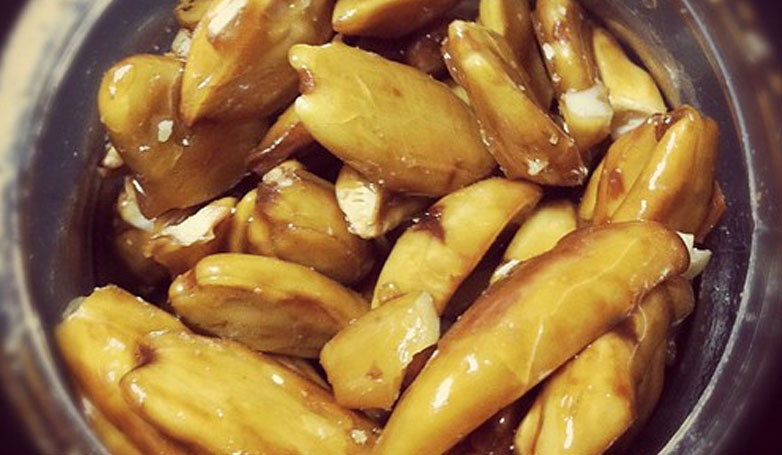
Pili Nut Candies are a quintessential treat from the Bicol region, renowned for their rich flavor and unique texture. These candies are made from the pili nut, a native Filipino nut known for its buttery taste and crunchy texture. The process of making Pili Nut Candies involves roasting the nuts to enhance their natural flavor, then coating them in a sweet caramel or syrup, which is often flavored with ingredients like vanilla or cinnamon. The result is a delightful confection that combines the nut’s inherent creaminess with a sweet, chewy coating.
Pili Nut Candies come in various forms, including bite-sized pieces, crunchy brittle, and even creamy toffees. They are not only a popular snack but also a cherished gift, often given during special occasions and festivals. These candies highlight the Bicolanos’ skill in transforming local ingredients into delicious and memorable treats, making Pili Nut Candies a beloved symbol of Bicol’s culinary heritage.
Sili Ice Cream
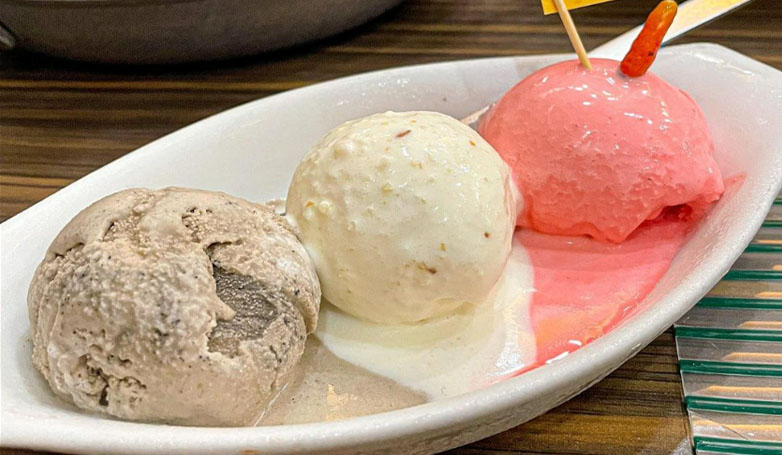
Sili Ice Cream is a bold and innovative dessert from the Bicol region, reflecting the area’s adventurous spirit and love for spicy flavors. This unique ice cream flavor incorporates sili (chili peppers) into a creamy, sweet base, creating a surprising yet delightful contrast between the cool, smooth texture of the ice cream and the unexpected kick of heat. The process involves infusing the ice cream mixture with finely chopped or blended chili peppers, which can range from mild to fiery hot, depending on the recipe.
Often, the spiciness is balanced with sweet elements like coconut or vanilla, providing a harmonious blend of flavors. Sili Ice Cream offers a memorable taste experience that challenges traditional dessert norms, showcasing the Bicolanos’ penchant for combining bold spices with classic sweets. It’s not only a treat for adventurous eaters but also a conversation starter, encapsulating the innovative spirit of Filipino cuisine.
Tiwi Halo-halo
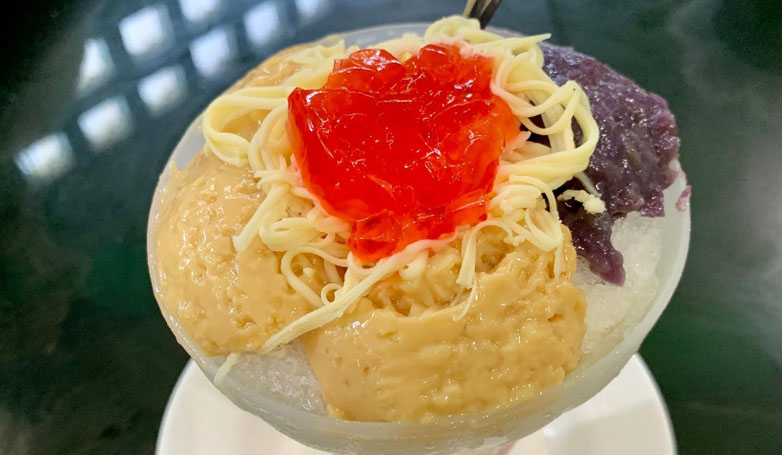
Tiwi Halo-halo is a unique and celebrated version of the classic Filipino dessert, halo-halo, from the town of Tiwi in the Bicol region. This refreshing treat stands out due to its distinctive local ingredients and preparation style. Tiwi Halo-halo features a vibrant mix of shaved ice and evaporated milk combined with a variety of ingredients that highlight the region’s culinary specialties. Common components include sweetened fruits like jackfruit and banana, candied beans, jellies, and tubers, all topped with a generous scoop of leche flan or ice cream.
What sets Tiwi Halo-halo apart is the addition of local delicacies, such as pili nuts, which add a rich, nutty flavor and a delightful crunch. The dessert is often garnished with a sprinkle of toasted rice flakes or a drizzle of caramel syrup for added texture and sweetness. Tiwi Halo-halo offers a deliciously cool and satisfying experience, perfectly capturing the essence of Bicol’s diverse and flavorful cuisine.
Conclusion
From the fiery Bicol Express to the creamy Laing, Bicol’s culinary landscape is as vibrant and diverse as its culture. Each dish offers a unique taste of the region’s history and traditions, making it a must-visit destination for any food lover. Whether you’re a fan of spicy food or prefer something milder, Bicolano cuisine has something for everyone. So, pack your bags and get ready to embark on a delicious adventure through Bicol’s finest food delicacies!

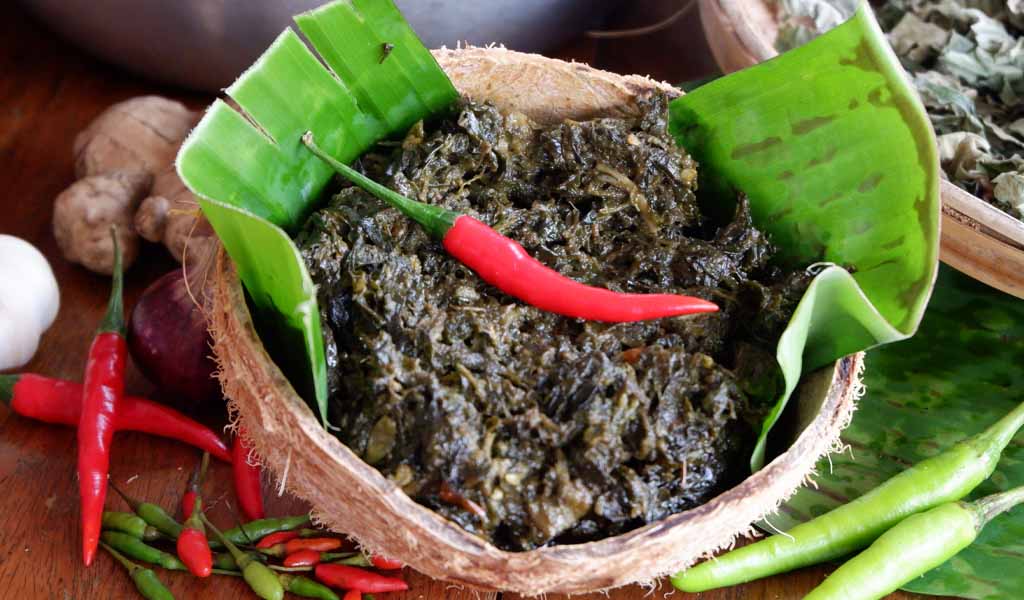
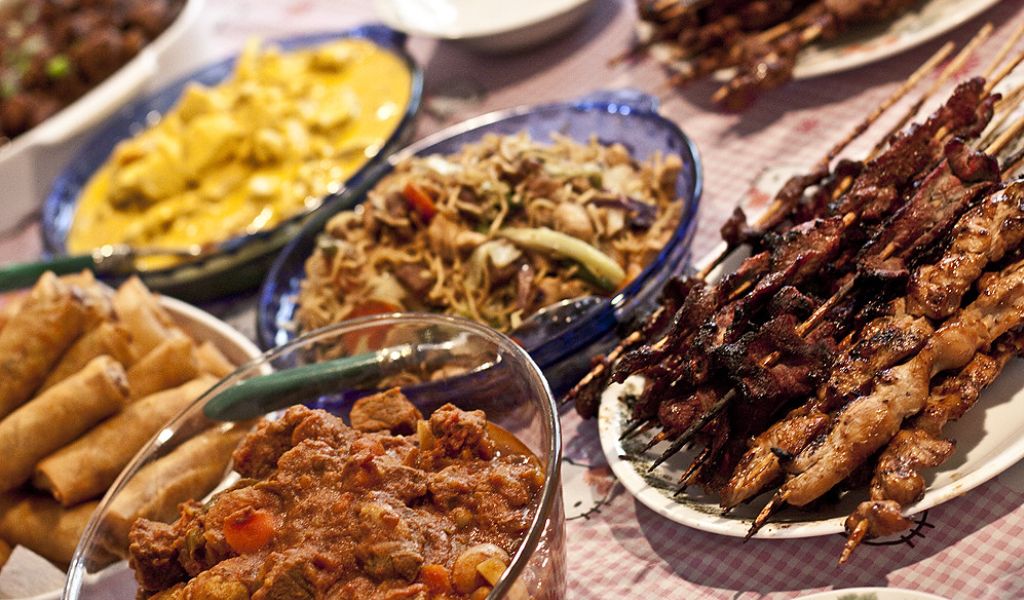


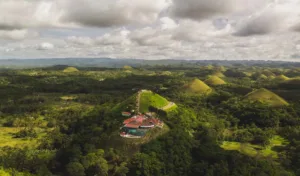


HanapphOnline shares content that celebrates fun, trends, and relatable cravings — much like the https://jackintheboxsmenu.com/ , which is all about satisfying comfort food with a playful twist. Whether it’s late-night eats or viral favorites, both tap into what people love right now: bold flavors, quick fixes, and a bit of indulgent joy.